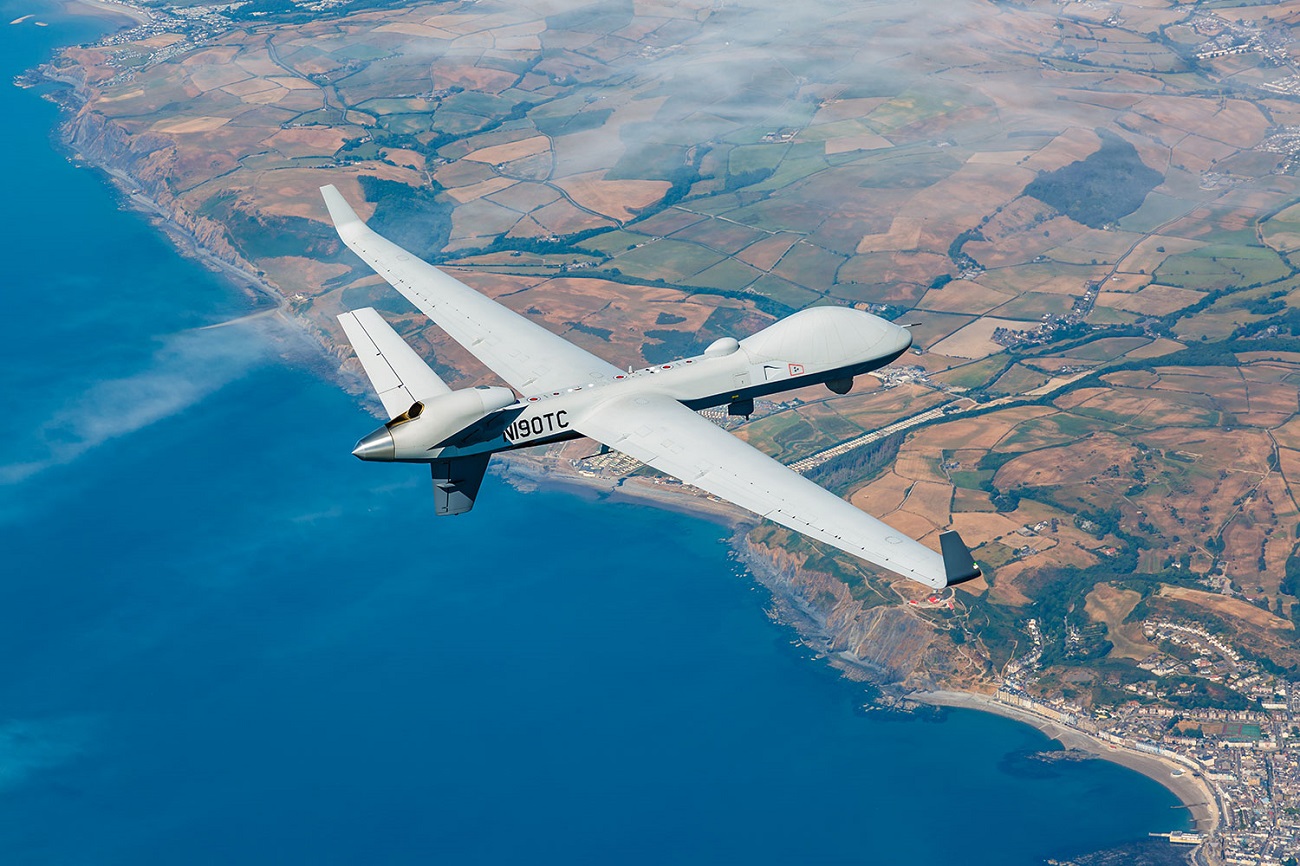The U.S. State Department has made a determination approving a possible Foreign Military Sale to the Government of India of MQ-9B Remotely Piloted Aircraft and related equipment for an estimated cost of $3.99 billion. The Government of India has requested to buy 31 MQ-9B Sky Guardian aircraft; 161 Embedded Global Positioning & Inertial Navigation Systems (EGIs); 35 L3 Rio Grande Communications Intelligence Sensor Suites; 170 AGM-114R Hellfire missiles; 16 M36E9 Hellfire Captive Air Training Missiles (CATM); 310 GBU-39B/B Laser Small Diameter Bombs (LSDB); and 8 GBU-39B/B LSDB Guided Test Vehicles (GTVs) with live fuzes. This proposed sale will support the foreign policy and national security objectives of the United States by helping to strengthen the U.S.-Indian strategic relationship and to improve the security of a major defense partner which continues to be an important force for political stability, peace, and economic progress in the Indo-Pacific and South Asia region. The proposed sale will improve India’s capability to meet current and future threats by enabling unmanned surveillance and reconnaissance patrols in sea lanes of operation. India has demonstrated a commitment to modernizing its military and will have no difficulty absorbing these articles and services into its armed forces. The principal contractor will be General Atomics Aeronautical Systems, Poway, CA.
Also included are Certifiable Ground Control Stations; TPE-331-10-GD engines; M299 Hellfire missile launchers; KIV-77 cryptographic appliques and other Identification Friend or Foe (IFF) equipment; KOR-24A Small Tactical Terminals (STT); AN/SSQ-62F, AN/SSQ-53G, and AN/SSQ-36 sonobuoys; ADU-891/E Adapter Group Test Sets; Common Munitions Built-In-Test (BIT) Reprogramming Equipment (CMBRE); GBU-39B/B tactical training rounds, Weapons Load Crew Trainers, and Reliability Assessment Vehicles-Instrumented; Portable Pre-flight/Post-flight Equipment (P3E); CCM-700A encryption devices; KY-100M Narrowband/wideband terminals; KI-133 cryptographic units; AN/PYQ-10 Simple Key Loaders; Automatic Identification System (AIS) transponders; ROVER 6Si and TNR2x transceivers; MR6000 ultra high frequency (UHF) and very high frequency (VHF) radios; Selex SeaSpray Active Electronically Scanned Array (AESA) surveillance radars; HISAR-300 Radars; SNC 4500 Auto Electronic Surveillance Measures (ESM) Systems; SAGE 750 ESM systems; Due Regard Radars (DRR); MX-20 Electro-Optical Infrared (EO-IR) Laser Target Designators (LTDs); Ku-Band SATCOM GAASI Transportable Earth Stations (GATES); C-Band Line-of-Sight (LOS) Ground Data Terminals; AN/DPX-7 IFF transponders; Compact Multi-band Data Links (CMDL); initial spare and repair parts, consumables, accessories and other related elements of logistics and program support.

The General Atomics MQ-9 Reaper (sometimes called Predator B) is an unmanned aerial vehicle (UAV, one component of an unmanned aircraft system (UAS)) capable of remotely controlled or autonomous flight operations, developed by General Atomics Aeronautical Systems (GA-ASI) primarily for the United States Air Force (USAF). The MQ-9 and other UAVs are referred to as Remotely Piloted Vehicles/Aircraft (RPV/RPA) by the USAF to indicate ground control by humans. The MQ-9 is a larger, heavier, more capable aircraft than the earlier General Atomics MQ-1 Predator and can be controlled by the same ground systems. The Reaper has a 950-shaft-horsepower (712 kW) turboprop engine (compared to the Predator’s 115 hp (86 kW) piston engine). The greater power allows the Reaper to carry 15 times more ordnance payload and cruise at about three times the speed of the MQ-1. The aircraft is monitored and controlled, including weapons employment, by aircrew in the Ground Control Station (GCS). The MQ-9 is the first hunter-killer UAV designed for long-endurance, high-altitude surveillance. The MQ-9A has been further developed into the MQ-9B, which (based on mission and payload) are referred to by General Atomics as SkyGuardian or SeaGuardian.
International demand for a MALE RPAS capable of being certified for operation within civilian airspace drove General Atomics to develop a version of the platform known by GA-ASI as MQ-9B SkyGuardian, previously called Certifiable Predator B, to make it compliant with European flight regulations to get more sales in European countries. In order to fly over national airspace, the aircraft meets NATO STANAG 4671 airworthiness requirements with lightning protection, different composite materials, and sense and avoid technology. The MQ-9Bs performance changes include a 79 ft (24 m) wingspan that has winglets and enough fuel for a 40-hour endurance at 50,000 ft (15,000 m). Features include High Definition EO/IR Full Motion Video sensor, De/Anti-Icing System, TCAS, and Automatic Take-Off & Land. The system also includes a completely redesigned & modernized integrated ground control station with 4 crew stations. As an MQ-9B RPAS, SkyGuardian is designed from the ground up to not only meet NATO standards (STANAG 4671) but also to comply with civil airspace requirements in the U.S. and around the world. Using GA-ASI’s first-of-its-kind Detect and Avoid System and Certifiable Ground Control Station, SkyGuardian seamlessly integrates with normal air traffic just like other commercial aircraft.













